7 Essential Truths About Natural Gemstones You Must Know
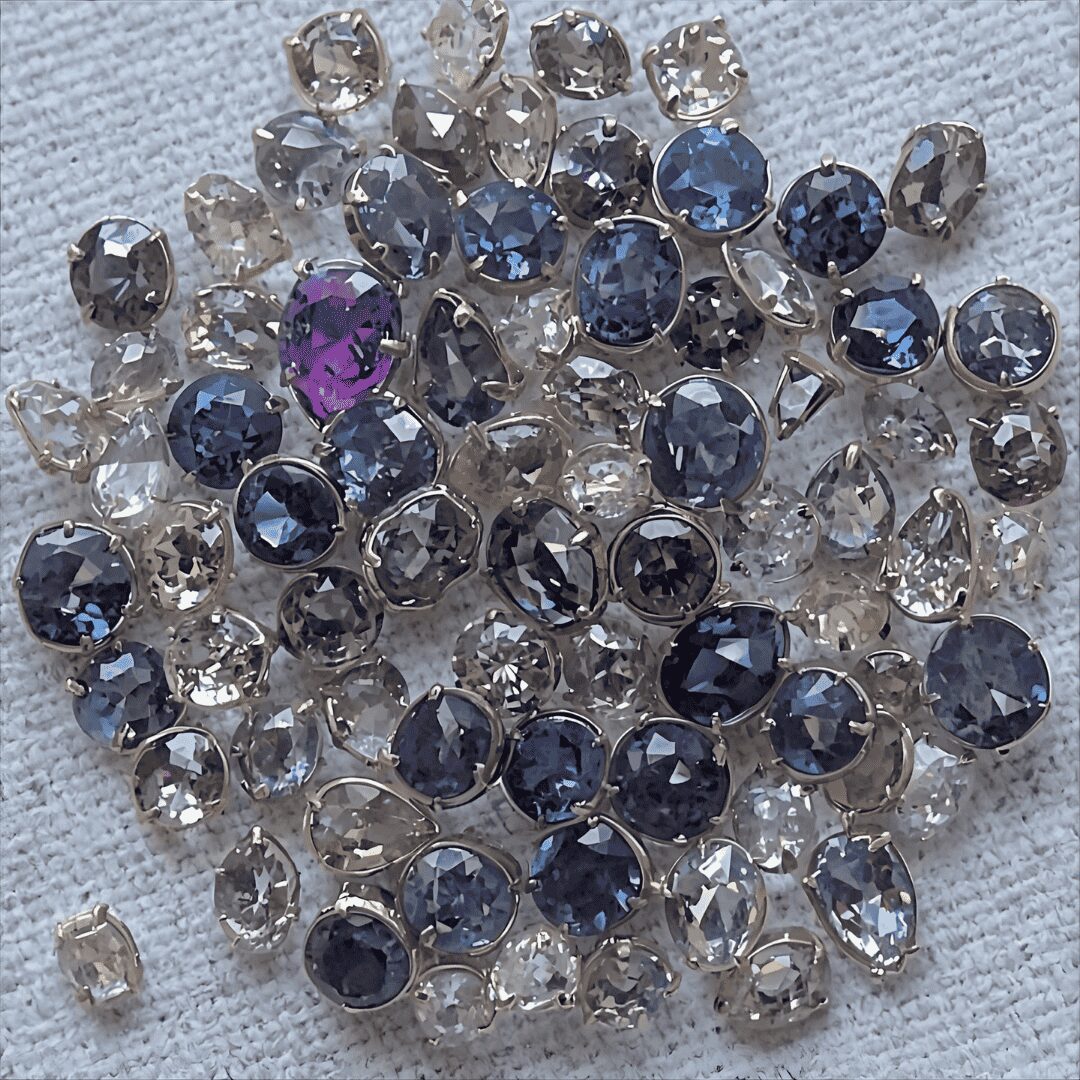
7 Essential Truths About Natural Gemstones You Must Know
In a world increasingly dominated by the artificial and the mass-produced, there is a profound and growing desire for things that are real, rare, and resonant with history. This desire finds its ultimate expression in the world of natural gemstones. These are not mere stones; they are treasures forged in the heart of the Earth over millions of years, each a unique capsule of geological time, carrying a story as old as the mountains. Here in Sri Lanka, the revered “Ratna Dweepa” (The Island of Gems), our connection to these authentic marvels is a part of our national identity. This comprehensive guide is dedicated to exploring the magnificent world of natural gemstones, uncovering the essential truths that define their beauty, their value, and their timeless allure.
Table of Contents
- Truth #1: The Definition – What Makes Natural Gemstones Truly “Natural”?
- The Miracle of Geological Formation
- Understanding the Difference: Natural vs. Synthetic and Imitation
- Truth #2: The Value Proposition – Why Natural Gemstones are a Worthy Investment
- The Unwavering Rarity Factor of Natural Gemstones
- A Tangible Asset in an Intangible World
- The Enduring Legacy of Natural Gemstones as Heirlooms
- Truth #3: The Sri Lankan Heritage – A Deep Dive into the Most Prized Natural Gemstones of Ceylon
- The Legendary Ceylon Sapphire: A Full Spectrum of Brilliance
- The Connoisseur’s Choice: Chrysoberyl (Cat’s Eye & Alexandrite)
- The Undervalued Prince: The Magnificent Spinel
- Other Notable Natural Gemstones from Sri Lanka’s Bounty
- Truth #4: The Connoisseur’s Eye – How to Evaluate the Quality of Natural Gemstones
- The 4Cs Framework for Natural Gemstones: Color, Clarity, Cut, and Carat
- The Critical Importance of Provenance for Natural Gemstones
- Truth #5: The Guarantee of Authenticity – The Non-Negotiable Role of Certification for Natural Gemstones
- Truth #6: The Spectrum of Treatments – An Honest Look at Enhancing Natural Gemstones
- Truth #7: The Path to Ownership – Acquiring Your Own Piece of the Earth
- Frequently Asked Questions (FAQs) About Natural Gemstones
- Conclusion: Embracing the Authentic Beauty of Natural Gemstones
1. Truth #1: The Definition – What Makes Natural Gemstones Truly “Natural”?
Before one can appreciate their value, it’s essential to understand what the term “natural” truly signifies in gemology.
The Miracle of Geological Formation
A natural gemstone is a mineral crystal that has been formed entirely by nature’s own geological processes, without any human intervention in its creation. This is a process of incredible serendipity. It requires a precise recipe of chemical elements, subjected to immense heat and pressure deep within the Earth’s crust for millions, and sometimes billions, of years. For instance, the formation of a sapphire requires aluminum and oxygen to crystallize, with trace amounts of iron and titanium serendipitously entering the structure to create the blue colour. Each natural gem is, therefore, a survivor of a violent and chaotic geological journey, making it a unique and finite masterpiece.
Understanding the Difference: Natural vs. Synthetic and Imitation
It is crucial to distinguish natural gemstones from their man-made counterparts:
- Synthetic Gemstones: These are lab-grown stones that have the exact same chemical, physical, and optical properties as the natural mineral. A synthetic sapphire is a real sapphire, but it was created by man in a matter of weeks, not by nature over millennia.
- Imitation Gemstones: These are materials that simply look like a natural gem but are something else entirely. For example, a piece of green glass cut to look like an emerald is an imitation.
- Treated Natural Gemstones: These are gems that started as natural but have been enhanced by humans to improve their appearance (e.g., via heat treatment). They are still classified as natural.
The value, rarity, and romance lie exclusively with the natural gemstones.
2. Truth #2: The Value Proposition – Why Natural Gemstones are a Worthy Investment
Beyond their obvious beauty, natural gemstones have been a trusted store of value for centuries. In the modern world, they represent a compelling alternative asset class.
The Unwavering Rarity Factor of Natural Gemstones
The fundamental driver of a gemstone’s value is its rarity. Because natural gemstones are a finite resource—there are only so many that the Earth has created and that can be mined—their supply is inherently limited. As demand grows and known deposits are depleted, the value of high-quality stones in the market is driven upwards. This contrasts sharply with synthetic stones, which can be produced in unlimited quantities.
A Tangible Asset in an Intangible World
In an age of digital transactions and volatile stock markets, natural gemstones offer the security of a tangible, physical asset. They are a highly concentrated and portable form of wealth that can be held in your hand. Historically, they have served as a reliable hedge against inflation, as the value of hard assets tends to increase when the purchasing power of currency decreases.
The Enduring Legacy of Natural Gemstones as Heirlooms
An investment in a fine natural gem is also an investment in a legacy. Unlike a stock certificate, a gemstone can be set in a piece of jewelry, worn, admired, and passed down through generations. It becomes an heirloom, a tangible link to the past, carrying with it the stories and sentiments of those who have treasured it.
3. Truth #3: The Sri Lankan Heritage – A Deep Dive into the Most Prized Natural Gemstones of Ceylon
For those of us in Sri Lanka, the world of natural gemstones is not a distant concept—it is our national heritage. “Ratna Dweepa” has been the source of some of the world’s most legendary gems for over two millennia.
- The Legendary Ceylon Sapphire: The king of our island’s treasures. The Ceylon Sapphire is the global benchmark for quality, celebrated for its unique brilliance and luminosity. Sri Lanka produces not just the iconic “Cornflower Blue” and “Royal Blue” sapphires, but a full spectrum of fancy colours, including vibrant pinks, sunny yellows, and the ultra-rare pink-orange Padparadscha, the rarest of all.
- The Connoisseur’s Choice: Chrysoberyl (Cat’s Eye & Alexandrite): Sri Lanka is the premier source for the finest Chrysoberyl Cat’s Eye, a phenomenal gem displaying a sharp, milky band of light that glides across its surface. We are also a historic source for the exceptionally rare Alexandrite, the “emerald by day, ruby by night” gem, famous for its dramatic colour-change.
- The Undervalued Prince: The Magnificent Spinel: For centuries, the brilliant Spinel was mistaken for ruby. The famous “Black Prince’s Ruby” in the British Crown Jewels is, in fact, a giant red Spinel. Sri Lanka is a world-class source for investment-quality Spinel in a stunning array of colours, from rich reds and pinks to deep blues and violets.
- Other Notable Natural Gemstones from Sri Lanka’s Bounty: Our rich alluvial plains also yield a treasure trove of other gems, including a wide variety of Garnets (like the cinnamon-coloured Hessonite), the ethereal Moonstone with its signature blue sheen, and the fiery Zircon.
4. Truth #4: The Connoisseur’s Eye – How to Evaluate the Quality of Natural Gemstones
Not all natural gemstones are created equal. The difference between a common stone and a top-tier investment gem can be vast. A connoisseur evaluates a gem based on a specific set of criteria.
The 4Cs Framework for Natural Gemstones: Color, Clarity, Cut, and Carat
- Color: For coloured gems, this is the most important factor. It is judged on Hue (the primary colour), Tone (its lightness or darkness), and Saturation (its intensity). A fine gem will have a vivid, pure colour that is evenly distributed.
- Clarity: Inclusions, or internal features, are the “birthmarks” of natural gemstones and are expected. They are often used by gemologists to confirm a stone’s natural origin. The standard for a top gem is that it be “eye-clean,” meaning no inclusions are readily visible to the naked eye. An excellent overview of the role of inclusions can be found on blogs by institutions like the GIA.
- Cut: The cut is the human contribution that unlocks a gem’s potential. A master lapidary will facet a stone to maximize its colour, brilliance, and life, while also retaining as much weight as possible.
- Carat Weight: The weight of the stone. Because large, high-quality crystals are exponentially rarer than small ones, the price-per-carat increases dramatically with size.
The Critical Importance of Provenance for Natural Gemstones
Just as in real estate where “location, location, location” is key, in high-end gemology, “provenance, provenance, provenance” can add a significant premium. A sapphire from Ceylon or a ruby from Burma, for example, will command a higher price than a similar stone from a less renowned location, due to the historical reputation and unique characteristics associated with that origin.
5. Truth #5: The Guarantee of Authenticity – The Non-Negotiable Role of Certification for Natural Gemstones
How can you be certain that the stone you are buying is a genuine natural gem of the quality described? The answer is simple: certification. An independent, third-party gemological certificate from a respected international laboratory (such as GIA, Gübelin, or SSEF) is your non-negotiable proof of authenticity. This report is like a gemstone’s passport, detailing its:
- Identity: Confirming it is a natural corundum, beryl, etc.
- Characteristics: Documenting its 4Cs (colour, clarity, cut, carat weight).
- Treatments: Disclosing any enhancements the stone may have undergone.
- Origin: In many cases, confirming its geographic provenance (e.g., Ceylon).
When you invest in a significant gem, you are not just buying the stone; you are buying the report that guarantees its identity. At Prestige Gems Store, we believe that trust is built on transparency, which is why our finest natural gemstones are accompanied by internationally recognized certificates, providing our clients with complete peace of mind.
6. Truth #6: The Spectrum of Treatments – An Honest Look at Enhancing Natural Gemstones
It is a reality of the modern market that many natural gemstones are treated to enhance their appearance. Understanding these treatments is vital.
- Accepted Treatments: The most common enhancement is heat treatment, particularly for sapphires and rubies. This is a stable, permanent process that mimics nature, and it is universally accepted in the trade. A heated stone is still a natural stone.
- Unacceptable Treatments: Enhancements that are not permanent or that misrepresent the stone, such as glass-filling in rubies or dyeing in emeralds, are not acceptable for investment-grade gems.
- The Untreated Premium: An untreated natural gem of fine quality is the rarest of the rare. These completely untouched treasures command a significant price premium and represent the pinnacle of gem collecting and investing. Full disclosure of any treatment is the ethical responsibility of the seller.
7. Truth #7: The Path to Ownership – Acquiring Your Own Piece of the Earth
Acquiring a fine natural gem should be a joyful and confident experience. The key is to work with a trusted expert. A reputable gemologist or dealer is your most valuable asset in this journey. They provide the education, access to quality stones, and transparency needed to make an informed decision. They can guide you through the complexities of the market and help you find a gem that aligns with your taste and investment goals.
8. Frequently Asked Questions (FAQs) About Natural Gemstones
1. What is the main difference between natural gemstones and synthetic ones? The primary difference is their origin. Natural gemstones are formed by the Earth over millions of years and are mined. Synthetic gems are created in a lab but have the same chemical properties. Natural gems are rare and valuable; synthetics are not.
2. Are all natural gemstones valuable? No. Value is determined by the “4Cs” and rarity. Common natural gemstones like amethyst or quartz are beautiful but are not considered high-value investment gems because they are abundant. Rarity is the key to value.
3. How can I be sure I am buying authentic natural gemstones? The only way to be 100% certain is to insist on a certificate from a major, independent gemological laboratory like the GIA. This report is your scientific proof of the gem’s identity and natural origin.
4. Are treated natural gemstones a bad investment? Not necessarily. A heated sapphire, for example, can be an excellent investment. The key is that the treatment must be stable, permanent, and fully disclosed, with the price reflecting the treatment. Untreated gems, however, will always be the most valuable.
5. Which natural gemstones are the most popular in Sri Lanka? In Sri Lanka, the Ceylon Blue Sapphire is undoubtedly the most famous and popular. Other highly prized natural gemstones include the Padparadscha Sapphire, Chrysoberyl Cat’s Eye, Spinel, and various types of Garnet.
9. Conclusion: Embracing the Authentic Beauty of Natural Gemstones
In a world of fleeting trends, natural gemstones are a symbol of permanence. They are a direct link to the Earth’s deep history, a testament to the power and artistry of nature. Each stone is a unique individual, with its own character, its own flaws, and its own story. To choose a natural gem is to choose authenticity over imitation, rarity over the commonplace, and enduring value over transient fashion. For those of us in Sri Lanka, it is an opportunity to be custodians of our own national treasure. We invite you to explore this magnificent world and discover a gem that resonates not just with your eyes, but with your soul.


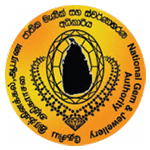

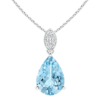
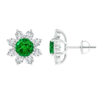



 Ladies Rings
Ladies Rings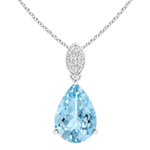 Pendants
Pendants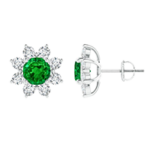 Earrings
Earrings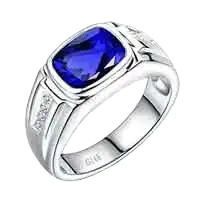 Gent’s rings
Gent’s rings